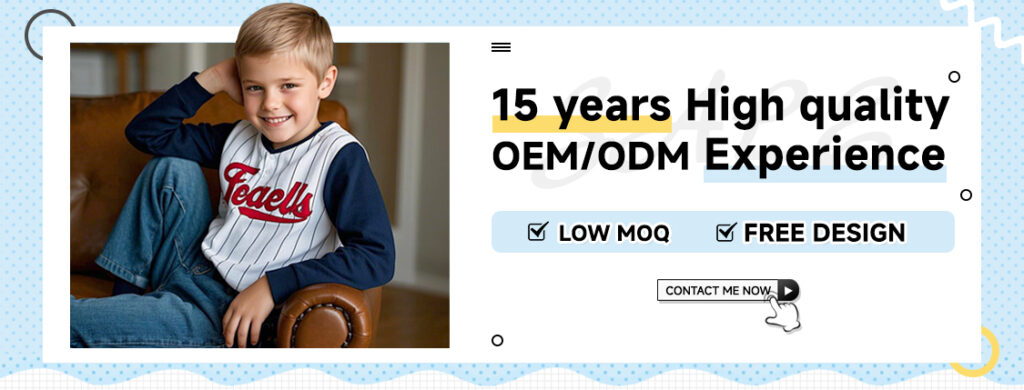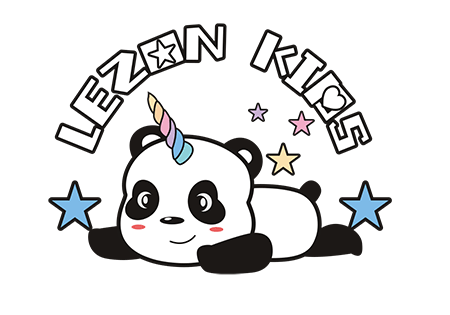In the profit – making game of children’s clothing retail, childrens clothing retail pricing strategy is the core hub connecting the supply chain and end – consumers. This article constructs a scientific pricing framework by breaking down 6 pricing elements, 5 premium models, and a 3 – level cost – control system, and reveals how to upgrade price competitiveness through supply – chain optimization.

Pricing Strategy Models: Striking a Balance Between Science and Art
Comparison of Basic Pricing Methodologies
At the initial stage of pricing children’s clothing, choosing the right childrens clothing retail pricing method is a crucial decision. The cost – plus pricing method, as a traditional pricing means, is based on rigorous cost accounting.
1.Cost – Plus Pricing Method:
Although the cost – plus pricing method can safeguard the profit bottom line, it has the drawback of being easily divorced from market acceptance. In markets that are relatively stable, with high product homogeneity and low consumer price sensitivity, such as basic children’s clothing, this method can effectively ensure corporate profitability. However, in a highly competitive market environment where consumers pursue cost – effectiveness, its limitations become evident.
- Formula: Retail Price = (Purchase Cost + Operating Cost) × (1 + Target Profit Margin)
- Applicable Scenarios: Classic basic styles, compliance – sensitive categories
- Advantages: Ensures the profit bottom line
- Risks: May deviate from market acceptance
Case: A maternity and baby store purchased sequined T – shirts at $45 each and priced them at ¥90 with a 50% profit margin. However, the actual sales volume was only 63% of the estimated amount because the average price of similar products from competitors was $75.
2.Market – Oriented Pricing Method:
The market – oriented childrens clothing retail pricing method injects the vitality of market dynamics into pricing. This pricing approach allows enterprises to closely follow market trends and respond flexibly in competition. However, it has extremely high requirements for the timeliness and accuracy of market information. Enterprises need to invest energy in building an efficient market intelligence collection and analysis system.
- Formula: Retail Price = Benchmark Market Price × (1 ± Differential Coefficient)
- Composition of the Differential Coefficient:
–Positive Factors: Unique design +15%, IP premium +20%, Process complexity +10%
–Negative Factors: Incomplete sizes – 8%, Delayed new product launch – 12%
Tool: Use the Price Tracking software to monitor the price – adjustment dynamics of competitors within 10 kilometers.
3.Psychological Pricing Practice:
Psychological pricing practice is an art that skillfully utilizes consumer psychology. In actual operations, enterprises need to deeply understand the psychological preferences and purchasing habits of their target consumers and skillfully integrate psychological pricing strategies into the product pricing system to enhance the price attractiveness and sales competitiveness of products.
- End – digit Pricing: The conversion rate of ¥99 is 17% higher than that of ¥100 (MIT experimental data).
- Tiered Pricing: A three – piece set is priced at ¥266 (when each piece is priced at ¥99, the total price is ¥297).
- Anchoring Effect: Marking a high – end sequined dress at ¥599 can increase the sales volume of the regular version priced at ¥399 by 43%.

Decomposition of Cost Composition: Precise Accounting from Fabrics to Traffic
1. Analysis of Traditional Cost Structure
| Cost Item | Proportion | Optimization Strategy |
| Purchase Cost | 55% | Adopt tiered pricing + 50 – piece minimum order quantity |
| Store Rent | 18% | Increase the proportion of online orders diverted to the store |
| Labor Cost | 12% | Reduce costs by 30% with a digital management system |
| Marketing Expenses | 10% | Reduce advertising investment as co – branded products bring their own traffic |
| Losses | 5% | Reduce the defective product rate with strict inspection standards |
2. Special Analysis of Process Costs (Taking Sequins/Beads as an Example)
① Sequin Process Cost Matrix
| Process Type | Unit Price Increase | Labor – hour Cost | Premium Space |
| Ordinary Machine – embroidered Sequins | +¥8 | 0.5h | 15 – 20% |
| Laser – positioned Sequins | +¥15 | 1.2h | 30 – 35% |
| Luminous Gradient Sequins | +¥23 | 2h | 50 – 60% |
② Cost – Control Techniques for Bead – setting Processes
- Material Substitution: Replace glass beads with resin beads to reduce costs by 32% and increase safety.
- Process Optimization: First, machine – embroider the outline and then manually embellish it, saving 40% of labor hours.
- Scrap Recycling: Use the beads from leftover materials for the development of peripheral products such as hair accessories.

Design of Promotion Strategies: The Dynamic Balance Between Profit and Sales Volume
Promotion Benefit Calculation Model
- Critical – Point Formula: Profit after Promotion ≥ Normal Profit
That is: (Promotional Price – Cost) × Estimated Sales Volume × (1 + Upsell Rate) ≥ Normal – Price Profit × Normal Sales Volume - Practical Case: A store launched a “Reduce ¥50 when spending over ¥300” activity:
- The average customer price increased from ¥180 to ¥320.
- The upsell rate increased from 1.2 to 2.5.
- The gross profit margin decreased from 45% to 38%, but the total profit increased by 27%.
Festival Promotion Combinations
- Traffic – attracting Products: Sequin – decorated Christmas stockings (Cost: ¥6.5, Price: ¥19.9, Purchase limit: 2 pairs)
- Profit – making Products: Bead – embroidered sweaters (Cost: ¥48, Price: ¥159, with a free Christmas hairpin as a gift)
- Image – building Products: IP – co – branded limited – edition dresses (Cost: ¥85, Price: ¥299, available for pre – order only by members)
- Inventory – clearing Products: Three pieces of previous – season basic styles for ¥100 (Original unit price: ¥49)
Stock – preparation Formula: Safety Stock = (Average Daily Sales Volume × Replenishment Cycle)+Fluctuation Buffer
For example, if the average daily sales volume is 20 pieces, the delivery period is 14 days, and the fluctuation buffer is 50 pieces, the calculated safety stock is 330 pieces. This ensures sufficient product supply during promotions and avoids losing sales opportunities due to out – of – stock situations. Enterprises should carefully design promotion combination plans according to the characteristics of different festivals, market demands, and product inventory conditions to achieve coordinated growth of profit and sales volume.

Pricing Standards for IP – related Products: Precise Calculation from Authorization Fees to Premiums
1. Cost – Allocation Model for Co – branded Products
| Cost Item | Proportion | Description |
| Basic Production Cost | 50% | Including special – process quality inspection |
| IP Authorization Fee | 15% | Paid in a stepped manner according to sales volume (5% for 0 – 1000 pieces, 12% for 1001 – 5000 pieces) |
| Joint Marketing Expenses | 10% | Shared for online and offline promotion |
| Logistics and Packaging Upgrade | 5% | Customized gift boxes and anti – counterfeiting labels |
| Reserved Profit | 20% | Including a 10% risk reserve |
2. Implementation Paths of Premium Strategies
- Scarcity Marketing: Limited – edition numbering + Pre – sale system (Premium ability +25%)
- Scene Bonding: Launch “Birthday Party Sets” (including co – branded clothing + peripherals, Premium +18%)
- Emotional Added Value: Donate a portion of the sales revenue to children’s public welfare projects (Premium +12%)
Warning Case: A retailer sold IP – related products without e – commerce authorization and was sued for 300% of the order amount, highlighting the importance of compliance review.

Supply – Chain Collaborative Pricing: Redefining Cost Control
1.The Economic Value of the Small – Order Model
Marginal Benefits of a 50 – Piece Minimum Order Quantity
- Trial – and – Error Cost: ¥2500 (50 pieces × ¥50) vs. ¥25,000 for the traditional 500 – piece minimum order quantity
- Inventory Turnover: 12 times a year vs. 4 times in the traditional model
- Capital Occupancy: Reduces the demand for working capital by 80%
2.The Price Dividends of Quick Response
Competitive Advantages of 30 – Day Delivery
- Mid – season Price Adjustment: Adjust the childrens clothing retail pricing strategy for subsequent batches based on early sales data.
- Hot – item Reproduction: It can complete the reproduction of social – media best – sellers within 3 weeks.
- Off – peak Stock – preparation: Avoid the industry’s peak production period and reduce raw – material procurement costs by 8 – 12%.
Empirical Data: Retailers adopting a quick – response supply chain have an average sell – through rate increased to 92% and a discount rate reduced to 15% (the industry average is 35%).

Conclusion: The Golden Triangle of Pricing Management
Scientific Pricing = (Cost Insight × Market Sensitivity)/Supply – Chain Flexibility
By choosing us, you will get:
- ✅ Precise cost control: 50 – piece minimum order quantity + free sample – making to reduce trial – and – error costs
- ✅ Fast market response: 14 – day delivery to seize the best pricing window
- ✅ Enhanced premium ability: A design library of over 2000 items and IP resources to increase added value
Only by deeply understanding the core points and internal logic of each link, accurately grasping market trends and changes in consumer demands, flexibly applying various pricing techniques and strategies, and continuously optimizing the cost structure and supply – chain efficiency can enterprises develop a scientific, reasonable, and competitive pricing system in the children’s clothing market, achieve long – term and stable profitability and development, remain stable in an environment full of opportunities and challenges, and create commercial value while providing high – quality products for children.






